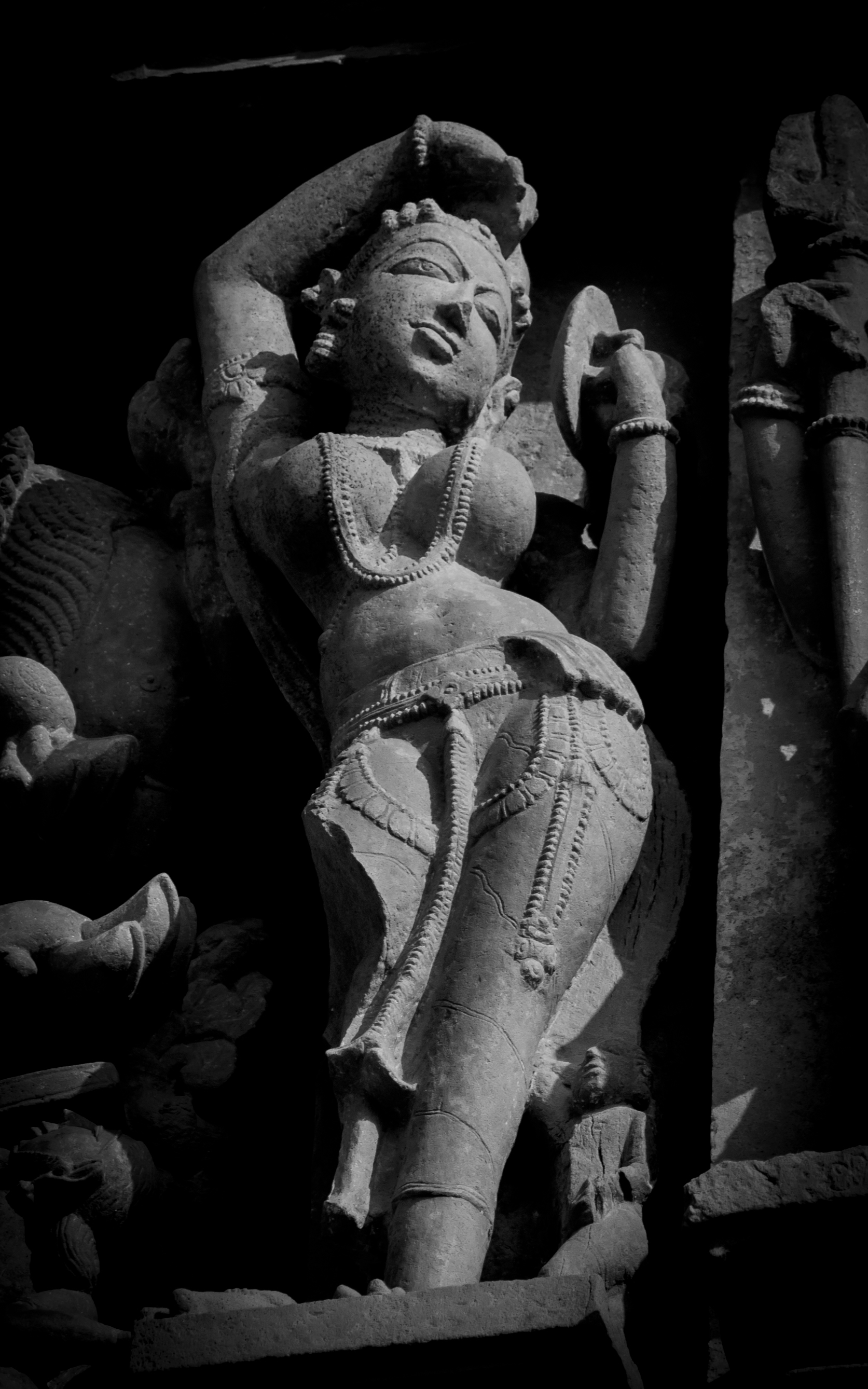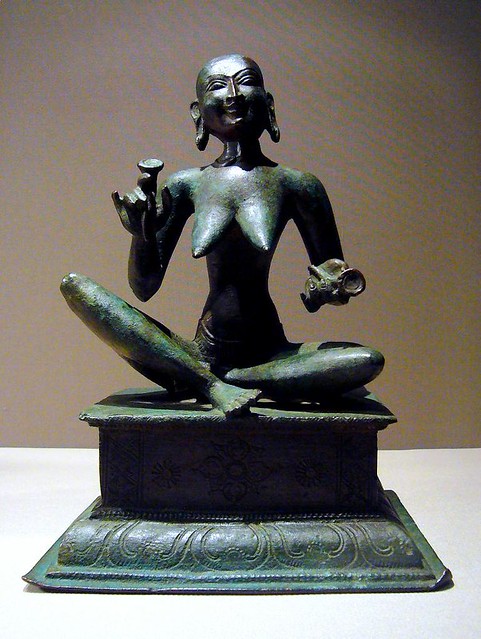She twirls around the branch of a tree
As she pull a thorn off her delicate feet
Her graceful curves entwine a branch
As she holds onto it like a fragile creeper
She calls the green parrot, plays with its red beak
The sign of sensuality, the pleasures of love
She gently smells the fragrance of the lotus
As she tucks it into her thick plaits of hair
Tying the anklets in her feet
She plays the rhythm of her heart with the drum
She dances her love dance with grace
Twisting the chauri along her naked back
She holds the mirror to her face
Completes the shringar with a dash of red
She lazily picks up the Ketaki flower
Delicate fingers imbibe its scent
This sensuous being is out to seek
Make no mistake with what you see
The partial nudity, the full breasts unique
She is not to be amorously felt
She is the power, splendid and divine
She is the connect to the supreme above.
Surasundaris have been misunderstood to be just sensuous beings. Studies indicate that they adorn the walls of sacred temples and took to being more popular during the rise of the tantrik cults. But to ascertain that they were only sensuous beings to attract men into the walls of the sacred shrine for a tantrik ritual with no other objective to their existence would be foolhardy of us. Apsaras, Kanyas, yakshis are other names that these celestial beings have been identified as… but somehow … my belief is that they were way more superior than what they have been documented to being.
My journey to understand these mystical women starts from the temple walls. On one side they ooze sensuality, on the other they appear extremely shy. They may be great exponents of kamasutra and yet they have the anxiety of union with the one of their choice, with whom they will lose their “virginity”. The signs of the thorn, the pose of the creeper, the sensuous conversation with the parrot are indicators of sensuality. They are also great dancers and they dedicate their existence to the lord himself. They are knowledgable and their wisdom shines through their Tejas. They are the epitome of beauty, but they are also mysterious celestials who can transcend the planes of existence, move from one to the other with ease. They cannot be owned, they cannot be touched until they want to, and they do fall in love against all rules, with gods, with devas, with men. And yet they roam all the worlds, on celestial missions, the knowledge of which only they have. They can come to us, if we call them through intense sadhana, they can help us or destroy us, they are powerful beings that we wouldn’t like to mess with…
And yet they are mysteriously more talented than mortals, their capabilities shine beyond human potential. When a Surasundari dances or sings we stay mesmerised, its like a spell they cast on us, a spell hard to get out of. They can hold a conversation with you, keep your grey cells churning, speak on the making of the universe, excite the nerves out of you and yet, we will not be able to tell whether this happened for real. They touch an intense world within us, they touch the psychological weakness we hardly knew we had. They transform the way we see the world, make us question exactly who we are and why are we going through this state of mind.
The laws of Indian sculpture and their presence on architecture has tried to its limits capacity to bring the heavens down on earth. The temple being the centre of existence depicts the universe, the stages of divine evolution, from animals to daily life, to court scenes, to mystical celestial being flying across the sky, which could include ganas or gandharvas, kinnaras and the sacred tree of life. But as we progress above, reach the zone of the Gods, we find Surasundaris amongst them. They occupy a position of importance on temple walls, next to the gods, closer to the ceiling, be it the outer wall, a pillar or inner door jamb. Surasundharis have a presence of importance, which has not been explored in entirety. They occupy a space that is above human life, but below the shikara. They are the door to the heavens, but don’t really get there (within the limitations of the stone temple … who knows where this silent world leads… )
Indian art depicts mythology, the culmination of an act, of a great exploit of a God to depict their capability. They alternatively depict the nature of a being, in this case Surasundaris, explicitly depicting their sensuality. What they don’t depict is the capability of these beings, their potential which can be accessed only through ritual, sacred sadhana which is performed within the temple. The walls depict who they are, but the sacred ritual within the walls gives the way to find out what they are capable of, why they are there and where they can take us.
Indian ritual worship is far more superior to modern science, and cannot be measured by that yardstick. They are so different that it would foolhardy to ask for proof for the limitations of our mind. So if we dismiss this sacred science, and measure it against the plague that has set in from the west, we do it at our own peril of losing sacred wisdom, that once was truly our very own.
This elixir of divinity is hard to come by, and when it does, it even harder to brush away. Lets set our egos aside (move the focal point of existence away from ourselves) and ask the question - Are we blessed enough to receive it?
* * *
Indian lifestyle on the other hand created a role for them among women. They were married to the deity within the shrine but with time, they were exclusively called Devadasis, but yet again, the perversion of educated men (both ancient sciences and modern) reduced them to prostitution and the same men now look down upon them... How fair is the mind of mortal men, how biased are they that they give the position of honour and they reduce it to dishonour by their own lack of self restraint?! And therefore I ask, are they seriously capable of higher wisdom?






